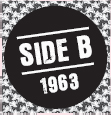
I WANT TO BE LOVED
Willie Dixon / 1:52
SINGLE
Come On / I Want to Be Loved
RELEASE DATE
United Kingdom: June 7, 1963
Label: Decca
RECORD NUMBER: F 11675
Musicians
Mick Jagger: vocals
Keith Richards: rhythm guitar
Brian Jones: harmonica
Bill Wyman: bass
Charlie Watts: drums
Recorded
Olympic Studios: May 10, 1963
Technical Team
Producers: Andrew Oldham, Eric Easton
Sound Engineer: Roger Savage
Genesis
While it may come as something of a surprise to learn that the Rolling Stones recorded one of Chuck Berry’s most pop-like compositions (that is to say, one of those least imbued with the spirit of blues/rock ’n’ roll) for the A-side of their first single, logic reasserted itself with the B-side. “I Want to Be Loved” had, after all, been written by Willie Dixon and performed by Muddy Waters, two emblematic figures of Chicago electric blues and mainstays of Chess Records. In other words, two major points of reference for the five young Londoners whose group took its name from a Muddy Waters blues number: “Rollin’ Stone.”
Muddy Waters recorded “I Want to Be Loved” in 1955, with “My Eyes (Keep Me in Trouble)” on the B-side. Eight years later, the Rolling Stones put their name to a more up-tempo version. This blues number had already been in the group’s repertoire for several months and had even been recorded by them during the session at IBC Studios, with Glyn Johns as producer and sound engineer.
Production
The most striking aspect of “I Want to Be Loved” is Jagger’s voice. Unlike the way it sounds on “Come On,” there is a youthful, fragile quality about it. This time, however, the Stones are in their element. They are playing the blues, and Brian Jones underlines this with his excellent harmonica playing, with reverb, redolent of Big Walter Horton. Charlie Watts, playing a Sonor Chicago Star kit (with very prominent snare drum) is solidly supported by Bill Wyman’s bass and Keith Richards’s rhythm guitar. It is possible to hear the latter speeding up slightly during the harmonica solo (around 1:10), however. Finally, although present at the recording, and by contrast with the March 11 version realized by Glyn Johns (which was, moreover, closer to Muddy Waters’s version), Ian Stewart’s piano is totally inaudible. Roger Savage, the sound engineer, provides an explanation: “The main thing I remember was that Andrew told me to turn Ian Stewart’s piano microphone off; he obviously didn’t want him in the band because he didn’t look the part… When they came up the stairs to the control room to play back there was no piano! Nobody said anything.”5